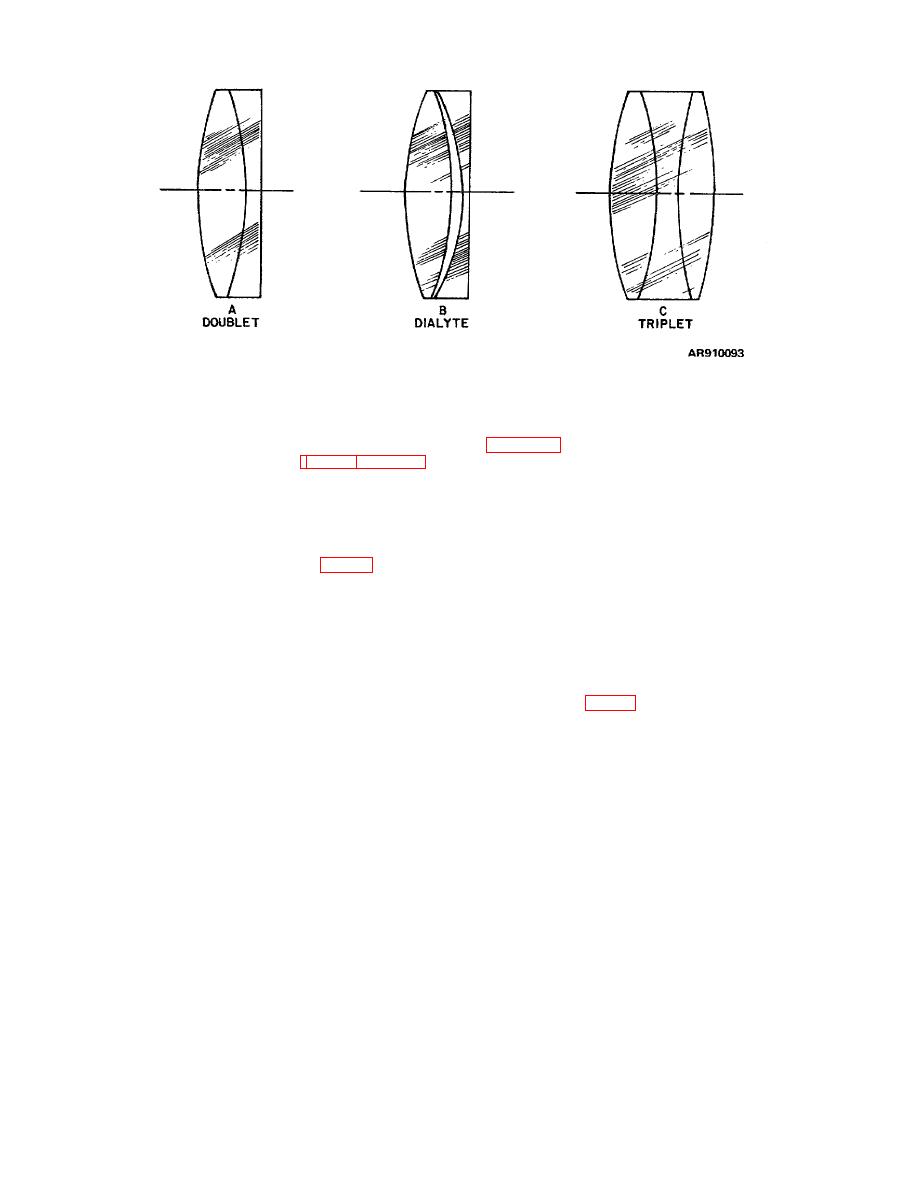 |
|||
|
|
|||
|
Page Title:
Figure 4-3. Types of objectives. |
|
||
| ||||||||||
|
|
 TM 9-258
Figure 4-3. Types of objectives.
(1) When the elements of the objective are of
may be magnified is, therefore, governed to a great
large diameter or when the faces of the elements are of
extent by the size of the objective. It is likewise
different curvature, the elements are not cemented but
governed by the limits set by distortion due to diffraction
are held in their correct relative positions in a cell by
separators and a retaining ring (B, fig 4-3 and 4-35).
(2) Increasing the size of the objective beyond a
This construction permits giving the inner surfaces of the
certain point does not improve the brightness of the
two elements different values and allows greater
image appreciably because of the restriction imposed by
freedom in the correction of aberrations. An objective of
the size of the pupil of the eye.
this type is often called a dialyte or Gauss objective.
(3) Some fire-control instruments, notably tank
(2) Certain objectives are composed of three
telescopes, have objectives which are smaller than the
elements securely cemented together (C, fig 4-3) or with
eyelenses of the instruments. Most instruments of this
two of the elements cemented and one mounted
nature, however, have low magnification.
Others
separately, or with all three elements mounted
sacrifice a certain amount of the light-gathering qualities
separately. Such objectives afford a total of six surfaces
of the larger objective for compactness of instrument.
upon which the designer can secure the best possible
correction for aberrations.
4-4.
Eyepieces.
c. Relation of Objective to Optical System.
a. General. The eyepiece may be considered
(1) The size of the objective affects the amount
a magnifying glass which enlarges the image produced
of magnification that can be used in the instrument. Only
by the objective (fig 4-4). The eyepieces of modern fire-
so much light can pass through a given objective. If the
control instruments generally consist of two or three
magnification were increased, that amount of light would
lenses; one, two, or all three of which may be compound
be distributed over a larger image area and a dimmer
lenses.
image would result. The effective size to which an image
4-4
|
|
Privacy Statement - Press Release - Copyright Information. - Contact Us |